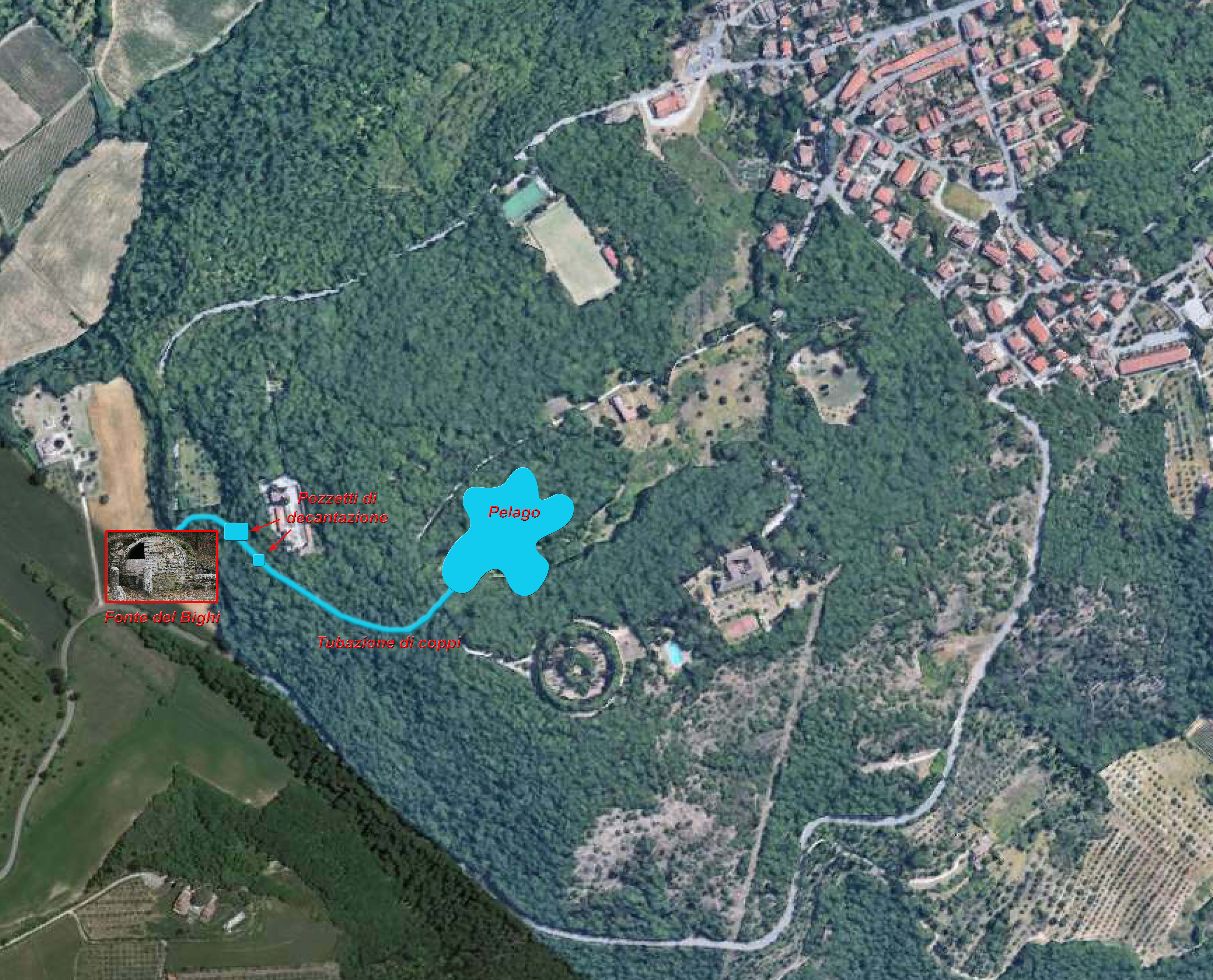LA FONTE DEL BIGHI DI MONTEFOLLONICO
Antonio Pecci, a Sienese nobleman, referred to this spring or fountain as the Bichi Fountain (now known as Bighi) around 1750 in his “Memoirs of the places of the ancient State of Siena”, but its origins are probably more ancient. It is believed to have been built by a local friar, Brother Bichi. It is a small construction of stone and brick with a barrelled vault, topped by a sloping roof. Attached is a plastered stone trough once used as a washhouse. Upstream in the woods there is a large cistern made of plastered bricks and covered with a barrelled vault, built during the First World War to store water. Further upstream there are two underground wells that were supplied with water passing through the limestone rocks upon which Montefollonico is built. The fountain provided drinking water until the 1920s, when the acquaduct that supplies the village to this day was built.

The source was probably the exit point of the upstream collection water at the Pelago della Fratta (a karst area that has a depression called dolina) channeled into a pipe made of terracotta tiles with various settling wells, still visible in mount of the source. The structure, already present in 1700, as indicated in the Pecci manuscript, takes its name from a local abbot called Bichi. Inside the forest, upstream from the source, there is a huge walled cistern built in the early 1900s.
